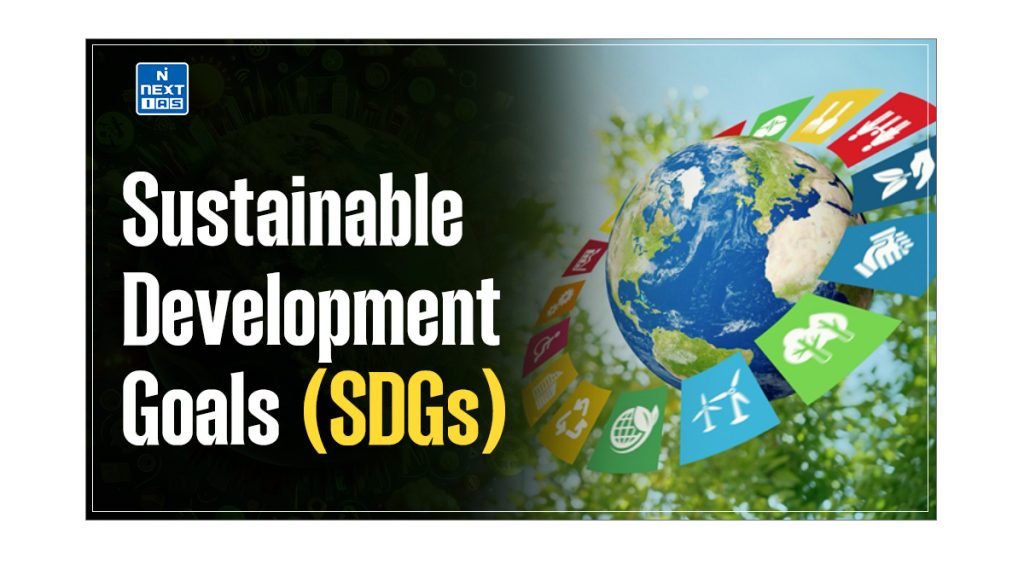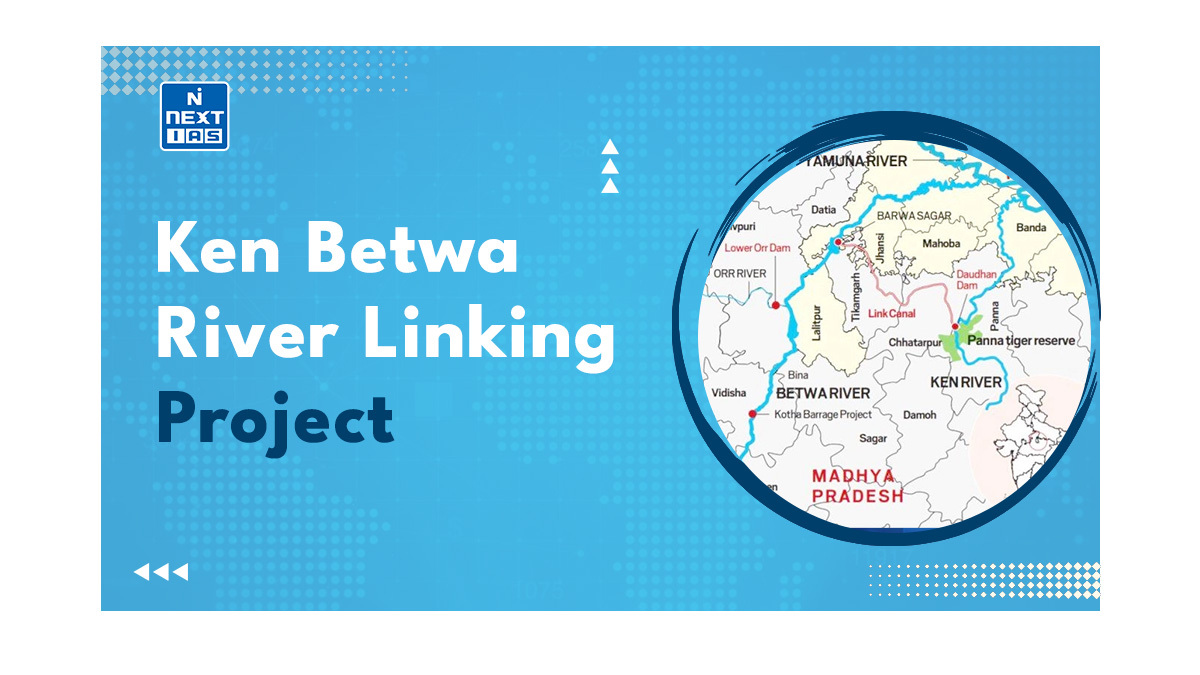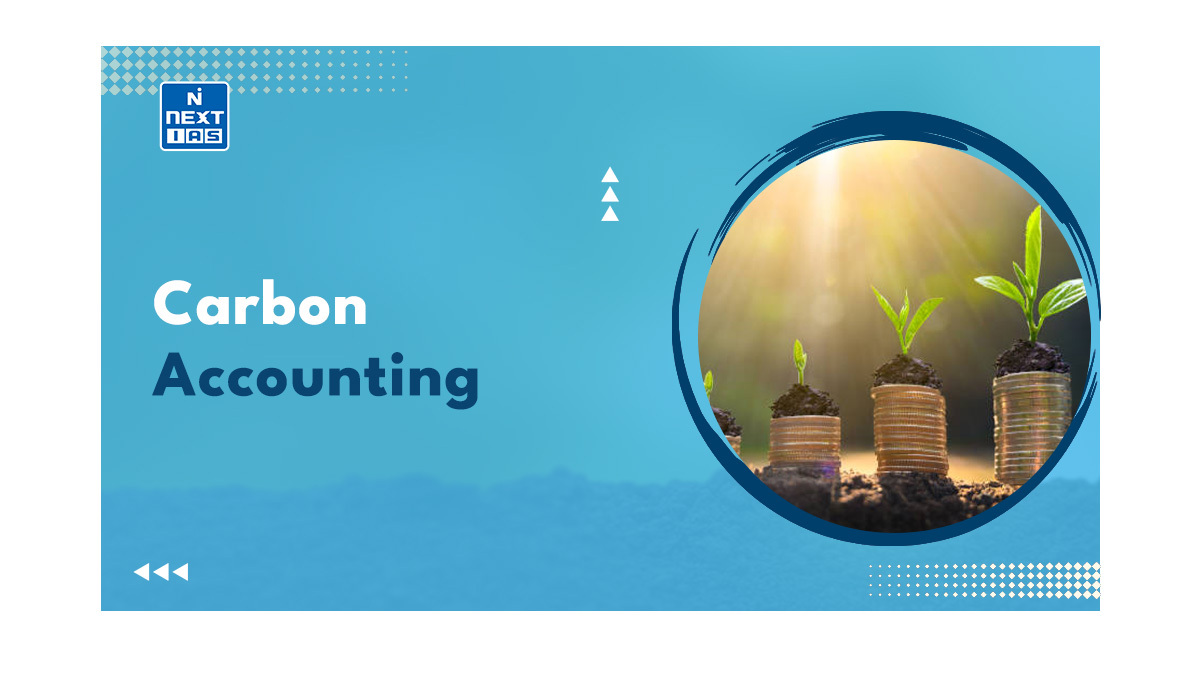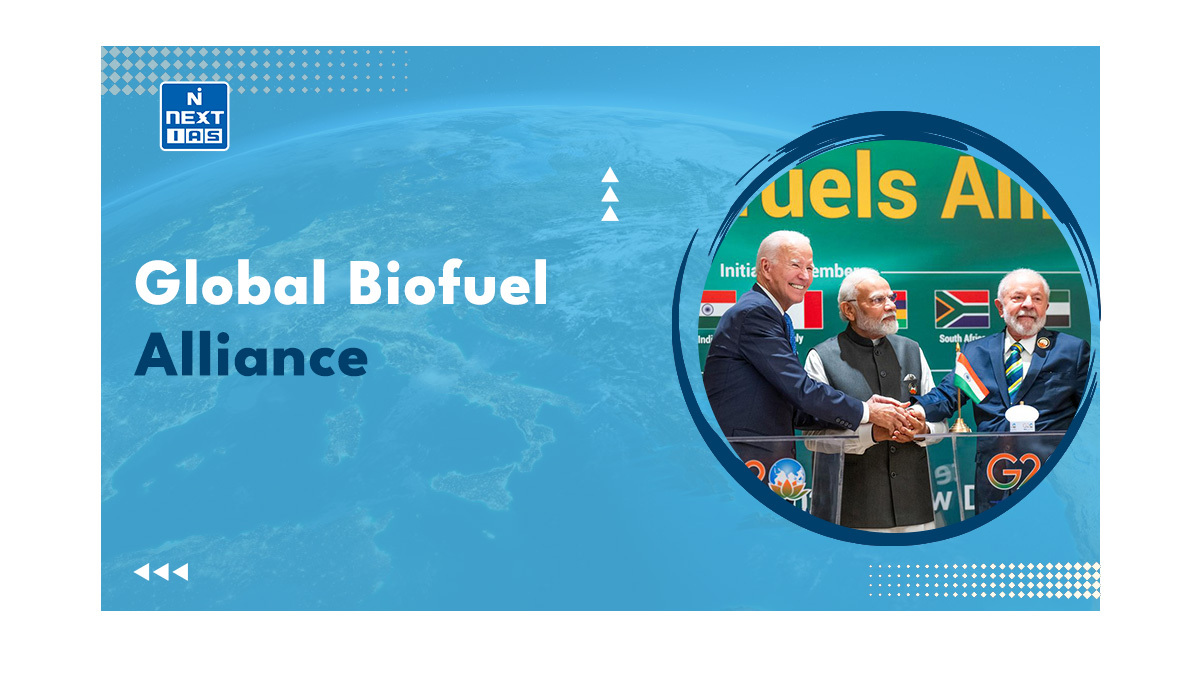
The Sustainable Development Goals (SDGs) are a universal call to action adopted by United Nations Member States in 2015 to eradicate poverty, protect the planet, and ensure prosperity for all by 2030. These 17 interconnected goals address global challenges such as inequality, climate change, and environmental degradation, promoting a balanced approach to economic growth, social inclusion, and environmental sustainability. This article aims to study in detail the significance of the SDGs in global development, their impact on India, and the state-level initiatives to implement these goals effectively.
Meaning of Sustainable Development
- “Sustainable Development” is a development that meets the needs of the present, without compromising the ability of future generations to meet their own needs.
- The focus of sustainable development is far broader than just the environment.
- It’s also about ensuring a strong, healthy, and just society. This means meeting the diverse needs of all people in existing and future communities, promoting personal well-being and social inclusion, and creating equal opportunity.
- Sustainable Development has emerged as the guiding principle for long-term global development.
- Consisting of three pillars, it seeks to achieve balanced economic development, social development, and environmental protection.
Read our detailed article on Sustainable Development.
India and Sustainable Development Goals
- India has played a vital role in shaping the Sustainable Development Goals (SDGs) and has been effectively committed to achieving them even before they were fully crystallized.
- Therefore, it is no surprise that the country’s national development goals are mirrored in the SDGs. The SDGs help us prioritise the problems that have endured through the past decades.
- Moreover, it reflects our evolving understanding of the social, economic and environmental linkages that define our lives.
- Addressing the needs of poor people worldwide is not merely a question of their survival and dignity or our moral responsibility. It is necessary to ensure a peaceful, sustainable and just world.
- The goals recognize that economic growth, industrialisation, infrastructure, and access to energy provide the foundations of development. We appreciate the prominence given to environmental goals, especially climate change and sustainable consumption.
- Through the SDGs, India aims to ensure social inclusion and empowerment of the poor, in addition to economic growth, infrastructural development, and industrial prosperity.
- While national efforts are paramount, global technical support is important in various areas, including developing methodologies for data collection and monitoring and evaluating the SDGs.
- The NITI Aayog is the nodal agency that implements SDGs in India.
State-Level Initiatives on Sustainable Development Goals (SDGs)
- Assam has set up a Centre for SDGs under the Planning and Development Department, and an integrated framework for implementation has been adopted. The state has also developed its vision for realising the SDGs: ASSAM 2030. A pilot is being undertaken in a few villages and towns to demonstrate the full attainment of the SDG agenda. Further, a robust technology platform is also being set up to track the progress pertaining to the SDGs.
- Andhra Pradesh as part of its Vision 2029, has identified indicators for each of the 17 SDGs. It has also outlined the baseline, targets, milestones, and key strategies for realising the SDGs.
- Bihar is in the process of finalising the roadmap for SDG implementation. The state Government is already focusing on several areas covered by the SDGs, including road connectivity and drainage, toilets, clean drinking water, electricity, higher education, skill development, and gender equality.
- Haryana has prepared its Vision 2030 document following extensive consultations with various stakeholders. The strategies outlined in the document are based broadly on five principles: integrated planning and decentralised implementation, equitable development, building human capital, promoting citizen-centric services, and green growth.
- Maharashtra is focused on balanced regional development and emphasises sustainable livelihoods. It is taking the initiative to improve the management of water, land, and forests, improve access to health and education, and develop skills for employment generation.
- Kerala has set elaborate indicators and standards for achieving SDG 3 on health. The state has sector-specific plans for 2030, emphasising entrepreneurship in production sectors, developing the key bases of a knowledge economy in education, S&T, etc., and ensuring environmental and social sustainability.
- Karnataka focuses on technology in 12 sectors: education, medical science and health care, food and agriculture, water, energy, environment, habitat, transportation, infrastructure, manufacturing, materials, and ICT.
- Tamil Nadu focuses on infrastructure development in six major sectors: energy, transportation, industrial and commercial infrastructure, urban infrastructure and services, agriculture and human development.
- Punjab has set in motion an SDGs support process under the Planning Department. The process involves extending technical assistance at the state level and facilitation support to different departments to improve programme implementation and generate information and evidence for public policy analysis and delivery in the context of SDGs.
- Madhya Pradesh has also established an SDG cell. The Madhya Pradesh State Planning Commission has also established a Planning and Policy Support Unit, Project Monitoring Unit, Knowledge Management Unit, and International Division to meet the challenges of perspective planning and SDGs.
Millennium Development Goals (MDGs)
- In 2000, 189 nations gathered at the UN Headquarters in New York (USA). They promised to free people from extreme poverty and multiple deprivations by signing a historic agreement, the Millennium Development Goals.
- This pledge of eight Millennium Development Goals (MDGs) was to provide a framework for developmental planning for countries worldwide. These targets were to be achieved by 2015. The MDGs are also known as ‘A roadmap for world development by 2015’.
- According to the United Nations, MDGs are quantified targets for addressing extreme poverty in its many dimensions-income poverty, hunger, disease, lack of adequate shelter, and exclusion-while promoting gender equality, education, and environmental sustainability.
- They are also basic human rights- the rights of each person on the planet to health, education, shelter, and security.
- MDGs played a vital role worldwide as extreme poverty fell from 47 % in 1990 to 14 % in 2015. The proportion of undernourished people fell by almost half, as well as the child mortality rate. Maternal mortality deaths declined by 45%.
MDGs and India
- India has halved its incidence of extreme poverty, from 49.4 per cent in 1994 to 24.7 per cent in 2011, ahead of the 2015 UN deadline. The report set the limit for extreme poverty as those living on $1.25 or less daily.
- The poverty reduction is still less than that of several of India’s poorer neighbours. Pakistan, Nepal, and Bangladesh have performed better than India regarding poverty reduction.
- Though India is on track to achieving the hunger targets, the nation remains home to one-quarter of the world’s undernourished population, over a third of the world’s underweight children and nearly a third of the world’s food-insecure people.
- India has achieved 11 out of 22 parameters in the report on education, poverty, health, education, and so on, and it is on track to achieve one more by the end of 2015.
- Though there are pockets of good performance, there are also sections that fare very poorly, bringing the national average down.
- On the environment front, India is one of the few countries that have reduced its carbon dioxide emissions in relation to its GDP. India emitted 0.65 kg of carbon dioxide per $1 of GDP in 1990, which fell to 0.53 kg in 2010.
- India still lags in several health parameters, such as maternal mortality, infant mortality, and basic sanitation.
- Although the infant mortality rate fell drastically from 88.2 deaths per 1,000 live births in 1990 to 43.8 in 2012, the annual progress has been slow. The maternal mortality rate fell from 560 per lakh live births in 1990 to 190 in 2013.
Criticism of MDGs
The MDGs have been criticised for many aspects, which are listed below:
- Progress towards MDGs was usually gauged in terms of developing countries as a group, ignoring significant heterogeneity within this category.
- MDGs would have been better targets had they been applied regionally or nationally. Last year, a World Bank study documented this varied progress across regions, with performance distorted by China and India. Indeed, within large countries, there are significant intra-country differences, too.
- The bar was often set too high, compounded by the fact that while the base was 1990, the MDGs weren’t agreed to until 2000/2001.
- Given the sectoral focus of many of the MDGs, they not only distorted resource allocation, but they also tended to ignore the fact that development is an integrated whole, extrapolating the argument the three out of eight goals are on health.
- Inordinate focus on targets and indicators has ignored other aspects. For instance, a focus on enrollment has sidelined the problem of quality of education.
- In setting broad global goals, the MDGs inadvertently encouraged nations to measure progress through national averages, shifting the focus away from those greatest in need.
- By solely taking into account the national averages to measure progress, many outliers of those averages were found to be those that are most affected by social, political, economic and environmental policy changes and actions, i.e. specifically, marginalised/vulnerable communities
- Many MDGs ignored processes and institutional mechanisms for delivery. Also, some of the goals, like Goal 8, had no time-bound targets
- No progress was seen in MDG targets for reducing global income poverty within the bottom 5 per cent by 2014, i.e. overall poverty was reduced, but the reduction was not distributed evenly or fairly
- Though it is said that MDG targets incentivised Governments to focus on low-hanging fruit rather than groups in most need, it laid the foundation for the Sustainable Development Goals (SDGs) to become better, new and improved goals.
| MDGs | SDGs |
|---|---|
| They had fewer goals, but targets set for these goals applied primarily to least developed/poor countries. | The new SDG goals set targets that call all countries to action, no matter how developed they are. |
| A small team of technical experts at the headquarters of the United Nations determined MDGs. | SDGs were agreed upon by an open working group composed of 30 members who collectively represented 70 different countries. |
| They fail to consider the root causes of poverty and fall short of considering the holistic nature of development. | SDGs are regarded as drastic improvements to the MDGs. They cover topics from consumption to global trade and are considered to be better equipped to handle present and upcoming challenges. |
List of 17 Sustainable Development Goals (SDGs)
The list of the 17 Sustainable Development Goals (SDGs):
- No Poverty: End poverty in all its forms everywhere.
- Zero Hunger: End hunger, achieve food security and improved nutrition, and promote sustainable agriculture.
- Good Health and Well-Being: Ensure healthy lives and promote well-being for all ages.
- Quality Education: Ensure inclusive and equitable education and promote lifelong learning opportunities for all.
- Gender Equality: Achieve gender equality and empower all women and girls.
- Clean Water and Sanitation: Ensure availability and sustainable management of water and sanitation for all.
- Affordable and Clean Energy: Ensure access to affordable, reliable, sustainable, and modern energy for all.
- Decent Work and Economic Growth: Promote sustained, inclusive, and sustainable economic growth, full and productive employment, and decent work for all.
- Industry, Innovation, and Infrastructure: Build resilient infrastructure, promote inclusive and sustainable industrialisation, and foster innovation.
- Reduced Inequality: Reduce inequality within and among countries.
- Sustainable Cities and Communities: Make cities and human settlements inclusive, safe, resilient, and sustainable.
- Responsible Consumption and Production: Ensure sustainable consumption and production patterns.
- Climate Action: Take urgent action to combat climate change and its impacts.
- Life Below Water: Conserve and sustainably use the oceans, seas, and marine resources for sustainable development.
- Life on Land: Protect, restore, and promote sustainable use of terrestrial ecosystems, manage forests sustainably, combat desertification, and halt and reverse land degradation and biodiversity loss.
- Peace, Justice, and Strong Institutions: Promote peaceful and inclusive societies for sustainable development, provide access to justice for all, and build effective, accountable institutions at all levels.
- Partnerships for the Goals: Strengthen the means of implementation and revitalise the global partnership for sustainable development.
Conclusion
The Sustainable Development Goals (SDGs) provide a crucial framework for tackling global challenges and promoting sustainable development for present and future generations. India’s commitment to these goals underscores the importance of aligning national and state policies with global objectives. Innovative solutions and collaborative efforts will be vital to achieving the SDGs, ensuring a more sustainable and equitable world for all.
GS - 3





